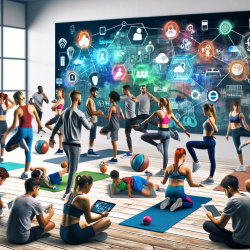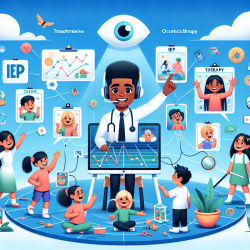Introduction
In today's digital age, social media platforms are not just for socializing; they have become powerful tools for education and health promotion. The article "Practical and Ethical Considerations for Schools Using Social Media to Promote Physical Literacy in Youth" provides valuable insights into how educators can utilize social media to enhance physical literacy among students. This blog will explore the key findings of the research and provide actionable steps for practitioners to implement these strategies effectively.
Understanding Physical Literacy
Physical literacy is defined as the ability, confidence, and desire to be physically active for life. It is a critical component of a healthy lifestyle, particularly for children and adolescents. The research highlights the importance of integrating social media into physical education settings to promote physical literacy. By doing so, educators can reach students in innovative ways, fostering a lifelong commitment to physical activity.
Leveraging Social Media in Education
The integration of social media in educational settings offers numerous benefits:
- Engagement: Social media platforms like Instagram and Snapchat are popular among youth, making them ideal for delivering engaging content related to physical literacy.
- Accessibility: Virtual Physical Education (VPE) courses can reach students who may not have access to traditional physical education due to geographical or personal constraints.
- Community Building: Social media fosters a sense of community, allowing students to share experiences and support each other in their physical literacy journeys.
Practical and Ethical Considerations
While the benefits are clear, there are practical and ethical challenges to consider:
- Privacy and Consent: Educators must ensure that students' privacy is protected and that consent is obtained for any data shared online.
- Quality of Information: It is crucial to provide accurate and evidence-based content to prevent the spread of misinformation.
- Teacher-Student Interaction: Online interactions should be professional and maintain appropriate boundaries.
Implementing the ALL-ENGAGE Playbook
The research introduces the ALL-ENGAGE Playbook, a framework designed to guide educators in using social media effectively. Key components include:
- Assessing: Evaluate which social media channels best reach your students.
- Listening: Monitor social media conversations to understand trending topics and student interests.
- Networking: Connect with peers to share resources and strategies.
- Guiding: Direct students to credible sources of information.
- Evaluating: Regularly assess the impact of your social media efforts on student engagement and learning.
Conclusion
By embracing social media and wearable technologies, educators can significantly enhance physical literacy among youth. The ALL-ENGAGE Playbook provides a structured approach to integrating these tools into educational settings, ensuring that the benefits are maximized while addressing ethical considerations. As we continue to navigate the digital landscape, it is crucial for educators to stay informed and adapt to new technologies that can positively impact student outcomes.
To read the original research paper, please follow this link: Practical and Ethical Considerations for Schools Using Social Media to Promote Physical Literacy in Youth.










